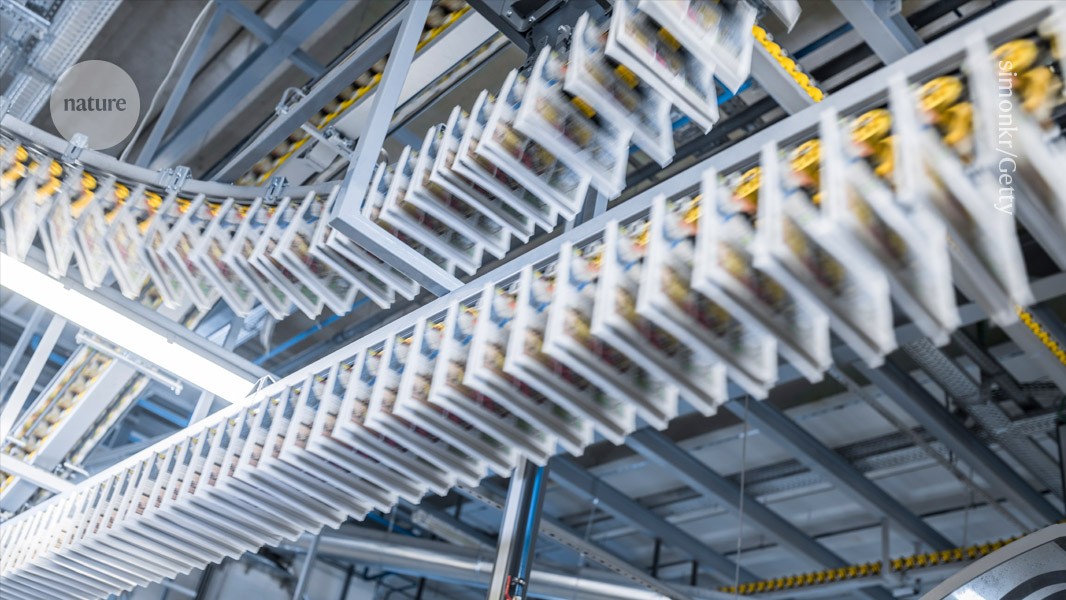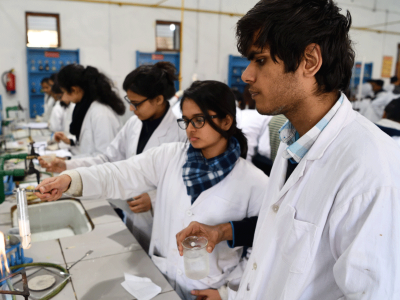
Some people worry that their jobs might be outsourced to artificial-intelligence tools — but contract managers Laura Arfi and Shannen Lau have instead used such programs to augment their workflows.Credit: simonkr/Getty
Amid concerns that artificial intelligence (AI)-driven automation will replace research managers, Laura Arfi and Shannen Lau see great opportunities to make their work even more valuable. At the University of Melbourne, Australia, Arfi and Lau are using AI tools to automate one of the most time-consuming, repetitive tasks in the research office: managing contracts and agreements.
For the pair, this was the natural first step in integrating AI-powered automation into their roles. As team leader of the university’s health- and medical-grants team, Lau oversees administration of all research-related contracts. Arfi, the manager of the research-contracts team, handles everything unrelated to the grant process, from collaboration and data-transfer agreements to confidentiality and consultancy agreements.
Using proprietary AI tools developed with the help of programmers at the university, Arfi and Lau describe how they have set up, tested and deployed an automated process that can write contracts and agreements, send them to signatories, receive signed copies, check them for errors and file them away.
Arfi and Lau say that the process is saving their team a lot of time, and they are now looking into other aspects of their work that can be automated.
Nature Index spoke to them about the lessons they’ve learnt in deploying the tools throughout the university.
What tools have you developed to automate processes in your office?
Over the past five years, we’ve developed automation tools for certain types of contract, including material-transfer agreements, which govern the transfer of research materials between organizations; confidentiality agreements; and some research-project and collaboration agreements.
For example, when we need to draft a confidentiality agreement, we answer a series of questions posed by the tool. On the basis of our responses, it will either generate a template based on university guidelines — which in most cases is adequate — or redirect the request to the research office for evaluation.
Three of the four tools that we have developed are live; we’re still testing the collaboration-agreement tool. They have been designed to integrate with other internal processes and systems at the university, so they can work with file-storage and communications systems.
We can’t share too many details about the AI system itself, because it is a proprietary product of the university, but people with specific questions can contact us directly.
How much time and resources are saved?
It’s become increasingly evident that the longer the tools are live, the greater the benefits. They have allowed members of the office to shift their focus from transactional tasks to more value-adding activities.
For instance, the more agreement requests are processed using the tools, the more time we have to review non-standard ones — meaning those that are difficult or impossible to create templates for — and address cases that require more human intervention.
2024 Research Leaders
There have also been intangible benefits, including the sense of achievement that has come with launching these tools. We think the project has demonstrated what can be achieved when the standard silos in large institutions are removed and people across teams, with different experiences and skills, come together with a shared goal.
What challenges did you face in getting the tools up and running?
Developing these tools was definitely a journey. We often say that the process was like completing a jigsaw puzzle: we had to piece together a number of processes and workflows to make a single clear image.
One challenge was designing, progressing and analysing the user-acceptance testing rounds, which took several years. We first undertook a comprehensive analysis of all of the processes that would be affected by the tools, and worked with many groups across the university — the ethics team, legal team, people in the financial and business-services department, and the information-technology team. We also spoke with researchers and other stakeholders at the university, who use contracts and agreements in different ways.



